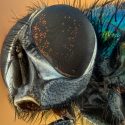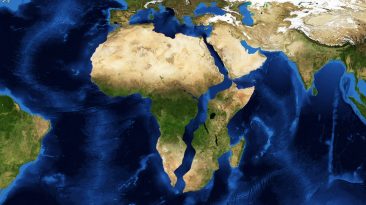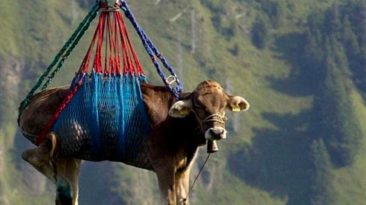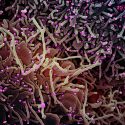Food is scarce. Money is worthless. Riots are everywhere. The world is in chaos. This isn’t our past.
It’s our future. Humans and bees have a bit of a love–hate relationship.
It’s a little more complicated than that. Bees do more than sting and make honey. They happen to pollinate most of the crops we consume, while contributing roughly $200 billion to the global economy each year.
And this is how we repay them. Global warming and increased pesticide use in agriculture are key reasons why bee populations are in decline.
What does this mean for humans? If we’re not careful, we’ll soon find ourselves in a very sticky situation.
Within three months of the last bee dying, crop yields around the world would plummet. Your grocery store would lose half its produce, sending the cost of fruits and vegetables skyward.
But you wouldn’t only lose fruits and vegetables, you’d also have to say goodbye to almonds, coconuts, chocolate, and, dare I say it? Coffee.
[dx_custom_adunit desktop_id=”RTK_CDE4″ mobile_id=”RTK_SUFd”]Without bees, other pollinators like birds, bats, and butterflies would have to pick up the slack, but would they be enough? In an absolute, worst-case scenario, the extinction of bees would cause food chains to collapse.
First, plants start dying off because they’re not getting pollinated, and then our favorite herbivores are the next to go. Consider livestock. Almond hulls are considered a high quality and good value feed ingredient for cows and chickens.
But as we mentioned before, almonds trees are pollinated by bees. If you think steaks are pricey now, just wait ’til the bees disappear.
A lot of meat and dairy products would go with them, turning familiar favorites like the cheeseburger into a rare, extravagant delicacy. And when you combine severe food shortages and soaring inflation, with a growing population of over 7 billion people… well, it’s not a very pretty picture.
Of course, there are other ways to see this scenario. Corn, wheat, and rice for example, are wind-pollinated crops. So we’d still have stuff to eat if bees went extinct, but having lost most fruits and vegetables, be prepared to adopt a bland, less nutritious diet.
But it might not have to come to that. In certain parts of China, humans have started to hand-pollinate their crops, while drone-pollination, and even robot pollinators are other avenues to consider. But although these options might promise a normal life without bees, you can imagine the increase in cost. We’d be paying a lot more for something Mother Nature now gives us for free.
So let’s not turn down a good deal. Since the ’60s, the volume of agricultural production that relies on pollinators has gone up 300%. And all it takes for us to keep this kind of growth sustainable is to treat our planet better.
So let’s do what we can to keep our world at a normal temperature. Let’s see if we can find safer alternatives than pesticides. Let’s put our trust in some of the natural world’s hardest workers. Because while the little things are often easy to overlook, their impact is hard to ignore.
Subscribe to What-If on Youtube or follow the show on Facebook Watch.
Sources
- “11 Reasons Bees Matter”. 2019. World Economic Forum. Accessed March 16 2019.
- “What Would Happen If Bees Went Extinct?”. 2014. bbc.com. Accessed March 16 2019.
- “If Bees Became Extinct, What Effect Would This Have On Mankind?”. Villazon, Luis. 2019. BBC Science Focus Magazine. Accessed March 16 2019.
- “The Economics Of Insect Pollination”. 2018. Modernag. Accessed March 16 2019.
- “20 Amazing Honey Bee Facts! – Matter Of Trust”. 2019. matteroftrust.org. Accessed March 16 2019.
- “Here’s Why All The Bees Are Dying”. McDonnell, Tim. 2019. Mother Jones. Accessed March 16 2019.
- “What Would Happen If Bees Went Extinct?”. Daftardar, Ishan, and More author. 2015. Science ABC. Accessed March 16 2019.
- “More than 700 North American Bee Species Are Headed Toward Extinction”. 2019. Time. Accessed March 16 2019.
- “Bees Are Dying — What Can We Do About It?”. Nabila Khouri, CNN. 2019. CNN. Accessed March 16 2019.



























